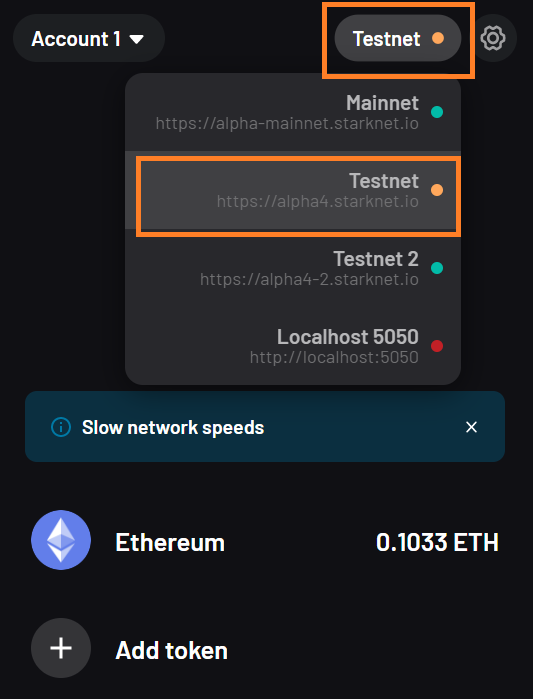Remember the Aptos airdrop?

While the broader market crumbles under the pressure of FTX’s collapse, you must not ignore new information or trends. You run the risk of missing out on big opportunities if you tune out.
zkSync shared more details on its plans to launch a token last week, confirming that two-thirds of the supply would be reserved for ecosystem development. You can likely still get in on the airdrop by performing transactions on the zkSync testnet.
Meanwhile, the StarkWare team has deployed StarkNet’s native token, STRK, on Ethereum, initiating the steps for the token launch. According to the latest blog post, “it will take time for the Foundation to determine the mechanism for distributing its tokens.”
StarkWare has allocated 50.1% of the token’s total supply to the StarkNet Foundation. While large portions of this amount are earmarked for StarkNet developers, community rebates, and research grants, 8.1% currently remains unallocated.
The team has said there won’t be a public token sale. That means there’s a good chance this 8.1% will be allocated toward an airdrop. Let’s discuss some promising protocols on StarkNet as well as a few other notable airdrop opportunities.
Exploring the StarkNet Ecosystem
StarkNet.ID is the native domain name service on StarkNet, and it’s currently deployed on the testnet. The protocol’s team is running a StarkNet Odyssey program and hinted that its users would get “a big surprise.”
To interact with the StarkNet.ID testnet, first you need to add some funds to the Goerli testnet network via the Argent X browser wallet. You can find the steps to install Argent here. Change your network by clicking on the Mainnet tab on the top right of the browser extension.
(Source: Argent X browser wallet)
Bridge funds to StarkNet’s testnet via the Ethereum Goerli testnet network here. Connect your MetaMask and Argent X wallet to the Starkgate bridge and transfer at least 0.05 ETH. Alternatively, you can use the network’s faucet. Expect long confirmation times in both cases and any other occasion you transact on the network.
(Source: Starkgate)
After adding tokens to StarkNet Goerli, go to the StarkNet.ID’s quest page, connect your wallet, and complete the steps laid out on the map. It involves quizzes, creating a unique StarkNet.ID, and a few other steps, such as linking your Twitter profile before you can create your .stark domain name and complete the quest.
(Source: StarkNet.ID)
You can also interact with the Alpha mainnet version using real ETH. Besides the applications I have mentioned before, you can try the DeFi yield aggregator Yagi or collect NFTs on Briq.
Scroll: Testing the “True zkEVM”
Scroll, branded as a “true zkEVM,” is another ZK-Rollup Ethereum Layer 2. It’s similar to zkSync 2.0, boasting full EVM compatibility.
Founded by a Ph.D. student at NYU, Scroll’s technology replicates the same version of the Ethereum Virtual Machine as used on mainnet, so it doesn’t require translation to run Ethereum’s Solidity code. zkSync 2.0 and Polygon’s zkEVM, on the other hand, have intermediary steps before they can offer EVM compatibility.
While it doesn’t make much difference to the user experience, Scroll’s design can make it easier for developers to use existing Ethereum tools for building apps. The project raised $30 million in April 2022 in an investment round led by Polychain Capital.
Scroll is currently in its testing phase. To gain access, sign up for the Pre-Alpha Testnet here. You’ll receive an email from the Scroll community validating your access.
Next, visit this page to add Scroll’s Layer 1 and Layer 2 testnets to your MetaMask wallet.
(Source: Scroll)
Then, request testnet ETH and USDC by going to the Faucet tab. The tokens will be transferred to Scroll’s Layer 1 network. After that, play around with your test tokens by using the Bridge and Swap functions next to the Faucet tab.
(Source: Scroll)
Magpie: Cross-Chain Swaps Built on Stargate
Magpie uses the cross-chain messaging and liquidity solutions of Stargate Finance and Wormhole to facilitate swaps between different networks. The project is backed by several prominent venture capital firms and angel investors like ParaFi, Big Brain Holdings, and Polygon co-founder Sandeep Naliwal.
The team announced that it plans to integrate with zkSync 2.0, starting with on-chain zkSync swaps, and implement cross-chain swaps in the future.
Magpie will use a token called FLY for protocol governance and liquidity incentives. While the team hasn’t confirmed an airdrop yet, the Discord moderators have hinted about special advantages for Alpha testnet users, likely early access to the protocol at launch or entry for a FLY token sale.
(Source: Magpie’s Discord)
The protocol will launch an Alpha testnet version soon. You can get on the waitlist by filling out the form here. The team is also running a community rewards program, which offers OG roles to the most active members in the project’s Discord server, potentially granting eligibility for an airdrop and early protocol access.
That’s all the updates I have today. The development and investment activity across the cryptocurrency space hints that ZK-Rollups and modular blockchains will dominate the next bull cycle. So instead of worrying about which firm will be the next to go bankrupt, why not spend some time on these risk-free activities to stay ahead of the curve?
Did you like the content of this Email? Follow us on Twitter.
Our research team at SIMETRI is also constantly sharing alpha. So feel free to follow me, Nivesh, and my colleagues, Anton, Sergey, and Stefan.
Stay safe!






